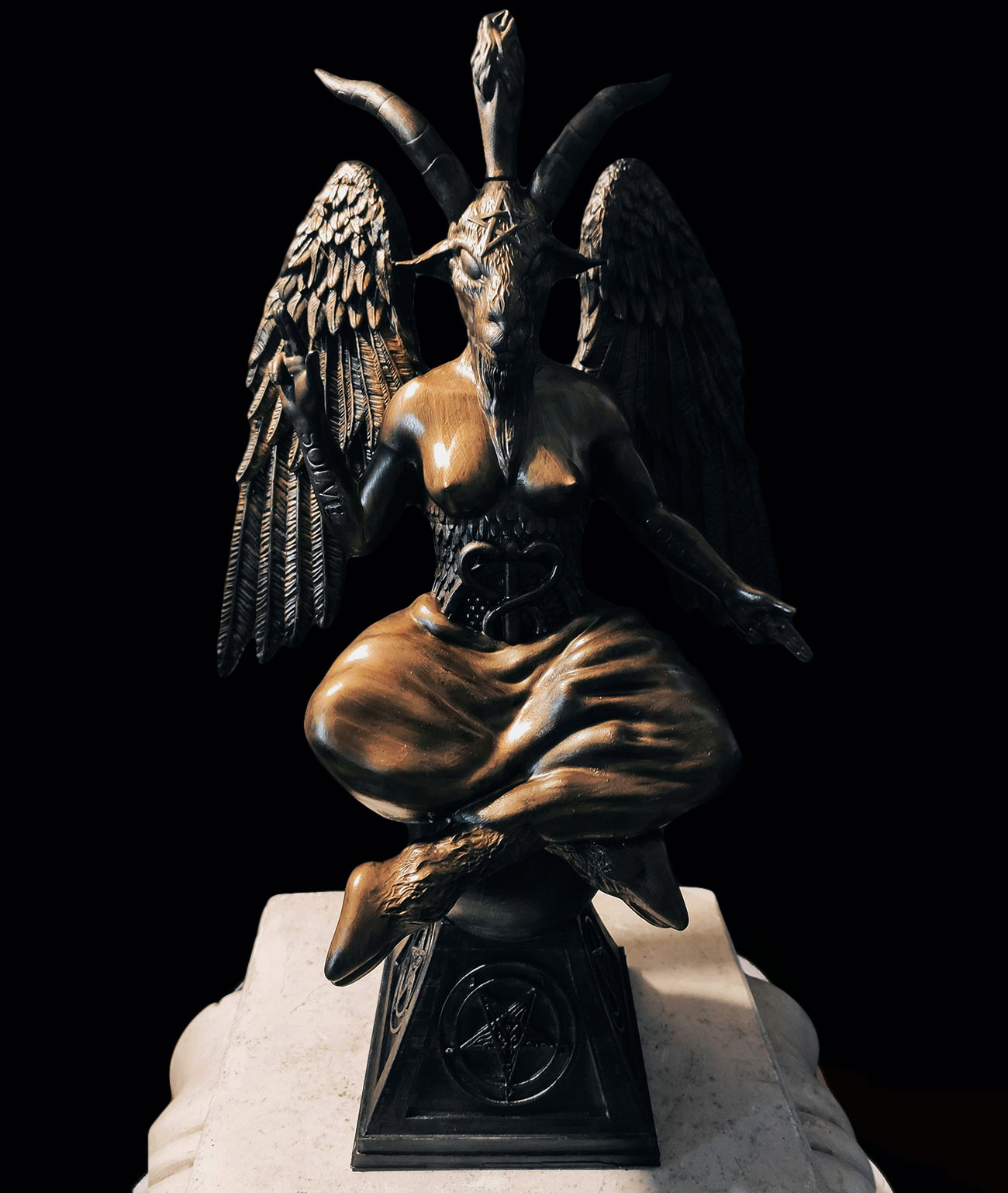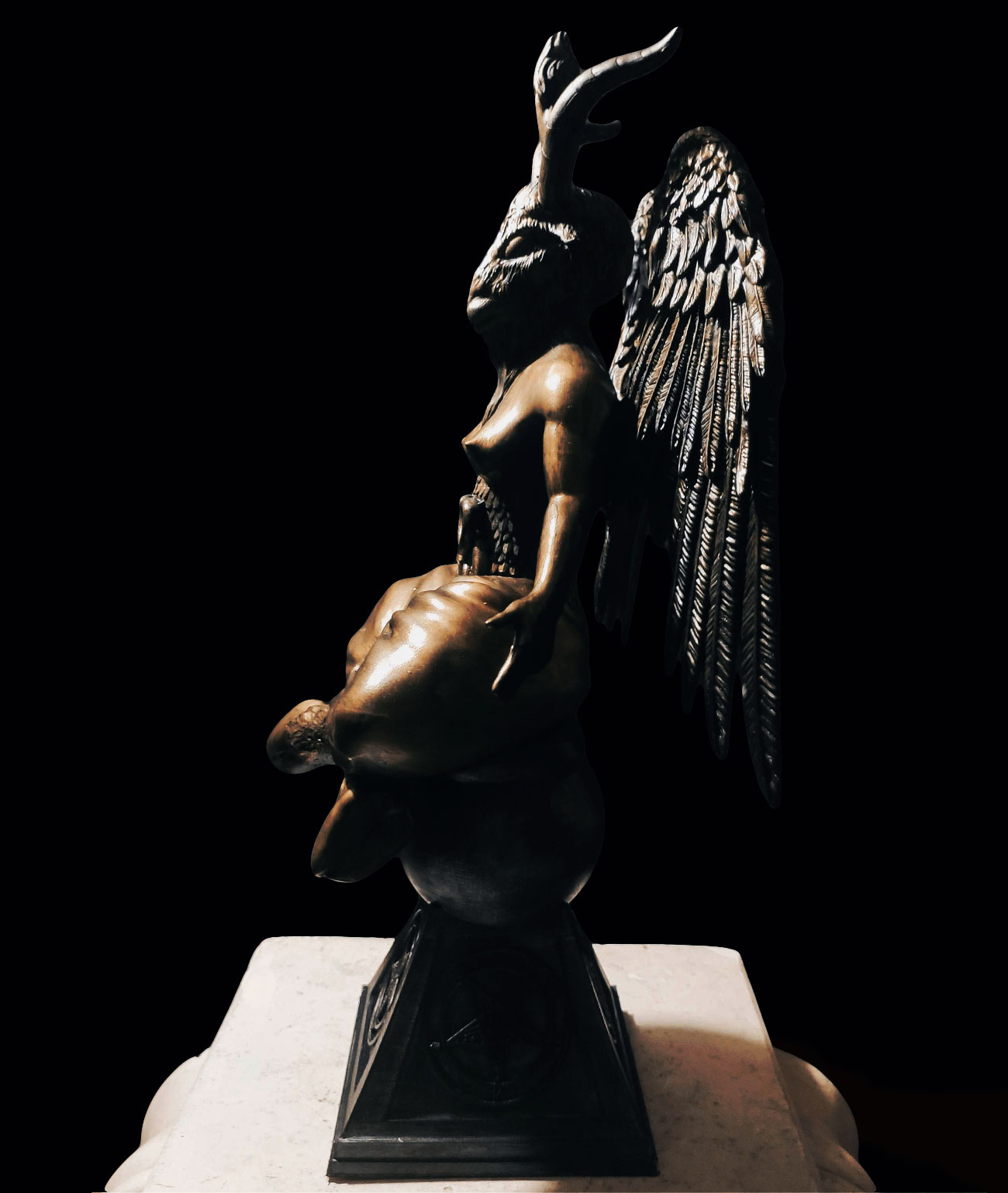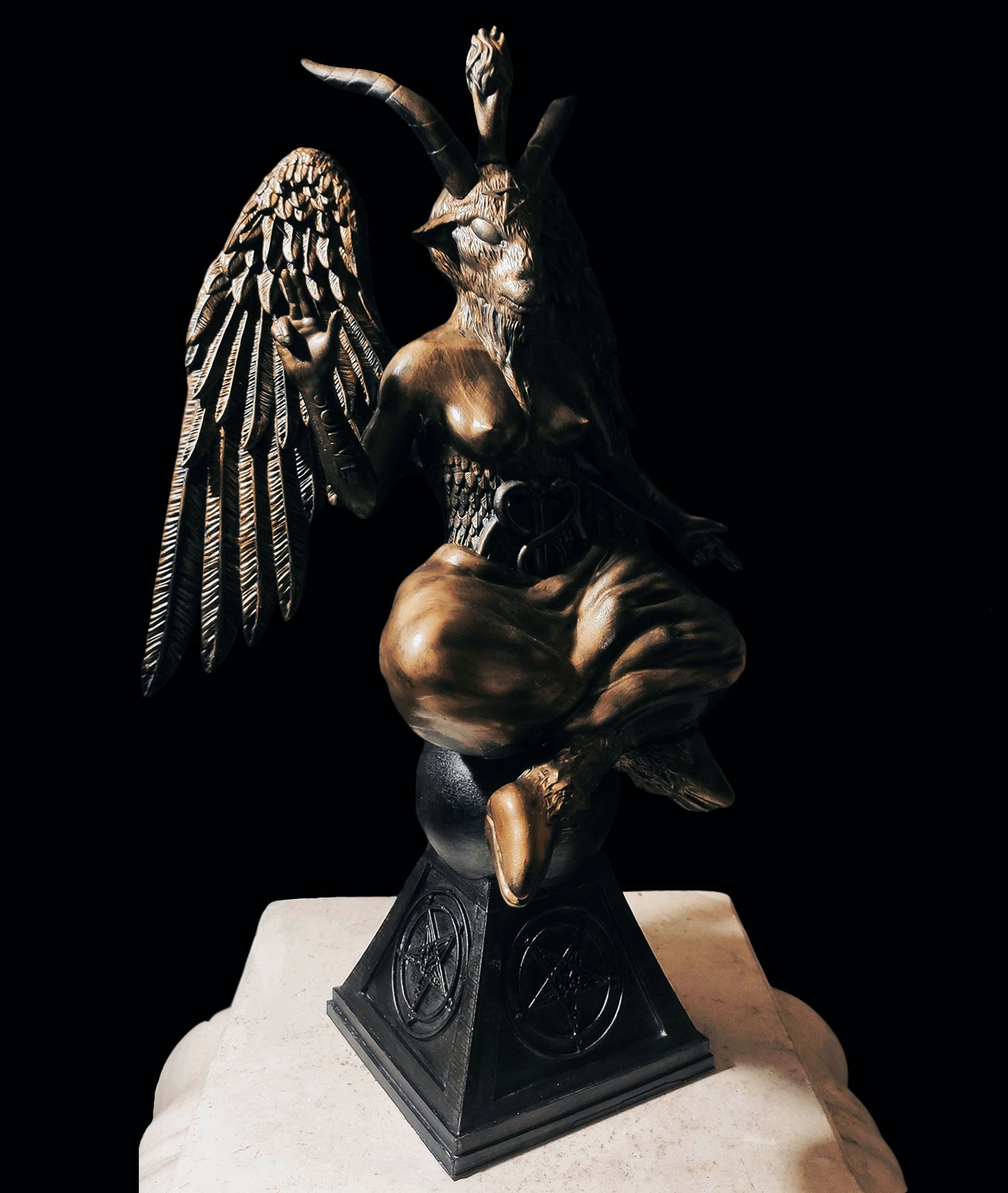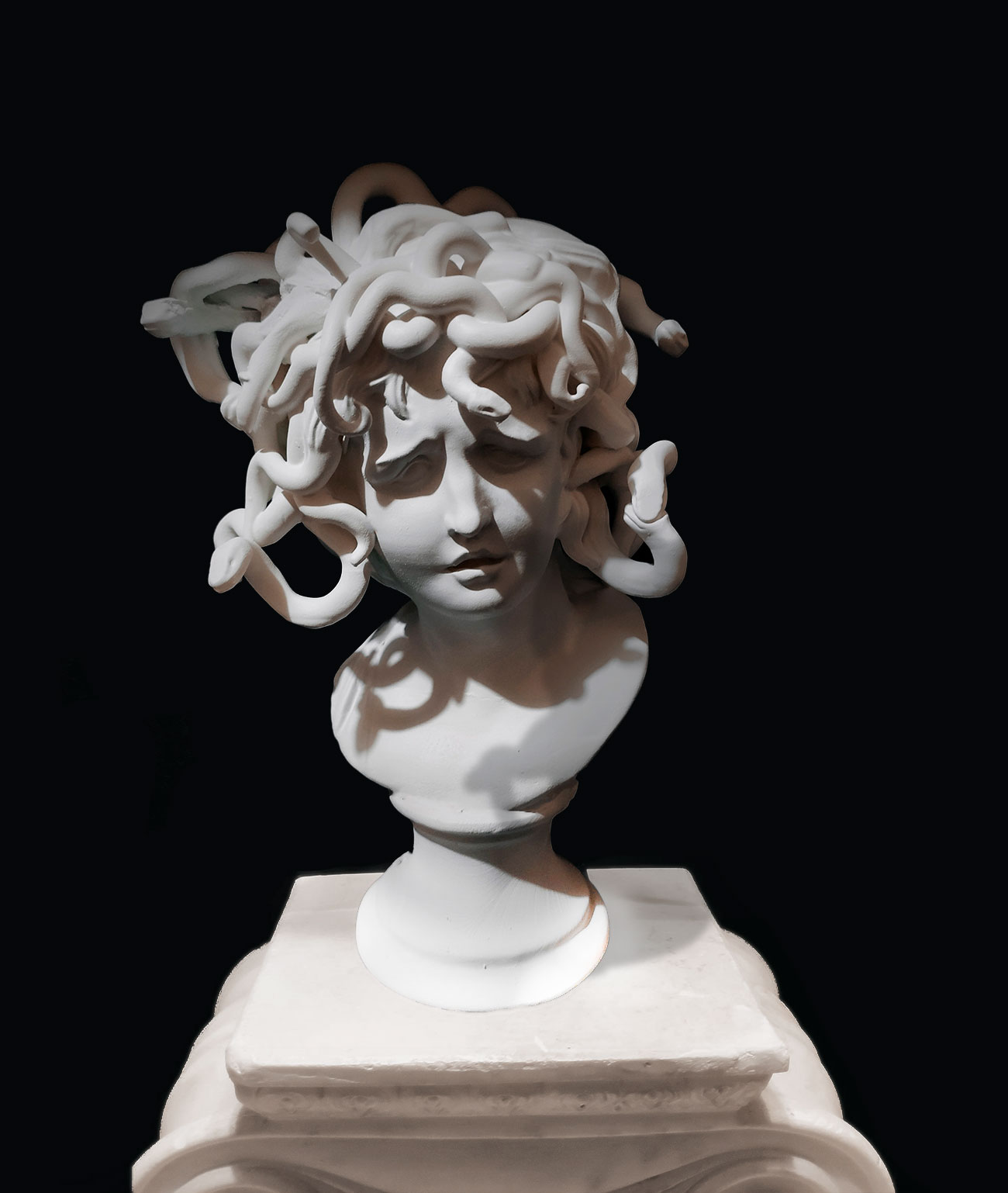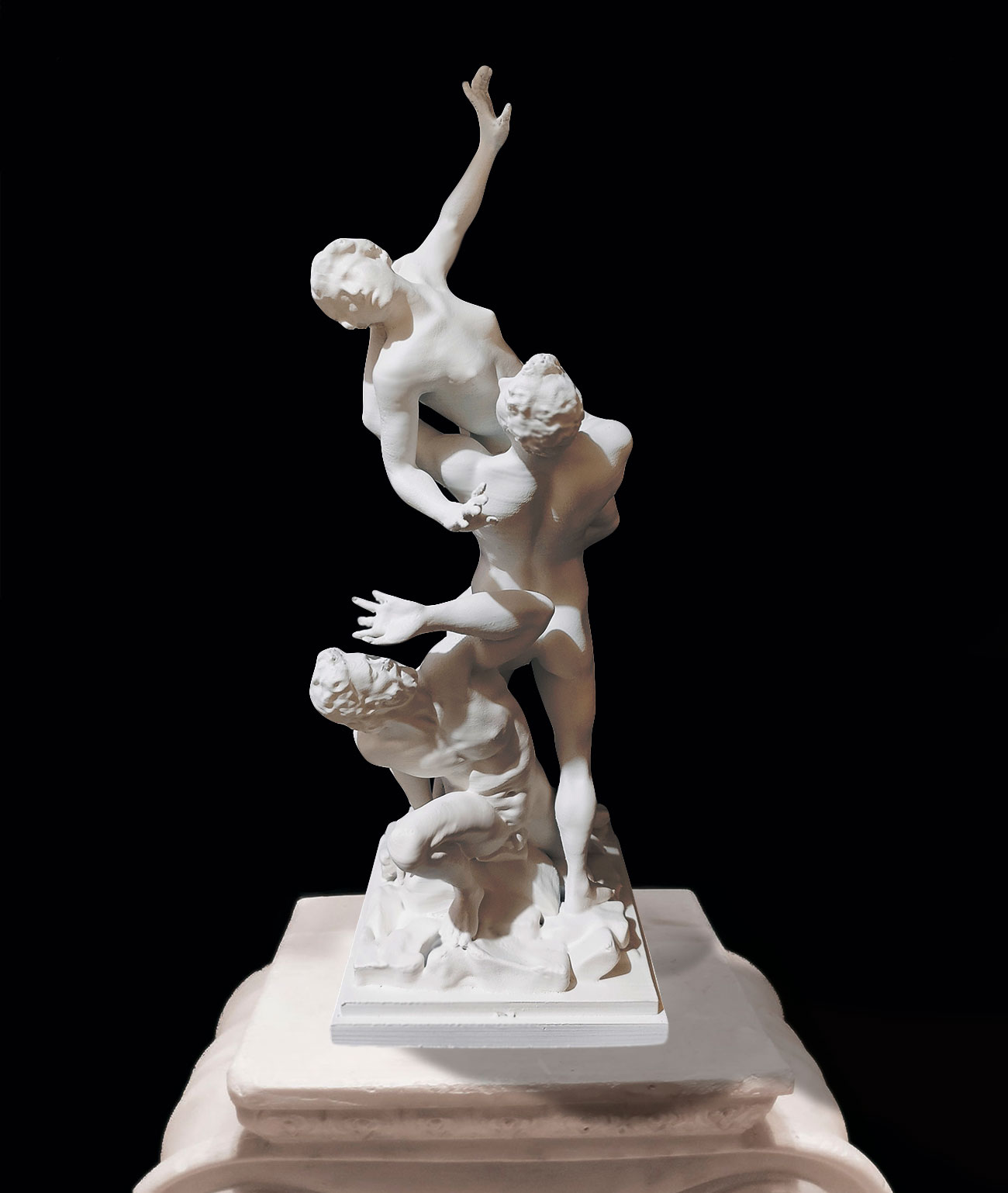Baphomet sculpture
€84,95 – €245,00 (Inc. Tax)
Baphomet sculpture 40 cm. High cuality resin. Extreme and exclusive quality
Baphomet, Bafomet, Baphomet or Baphomet is a deity, represented by an anthropomorphic image, which contains within itself heterodox elements associated with Christianity in medieval times.
The term “Baphomet” is little known in itself and if it is, it is due almost exclusively to the appearance of a similar term in the process that served to annihilate the Order of the Temple or Knights Templar, an ancient military Order, in 1307 and to suspend it sine die by Pope Clement V at the Council of Vienne in 1314. In fact, this “baphomet” was one of the pillars on which the inquisitors of the King of France (Philip the Fair) based the bulk of the accusations of heresy, along with other unfounded charges allegedly committed by the Grand Master, Jacques de Molay, and the Templars, which included denying Jesus, stepping on the Cross of Christ in their rites, and practicing sodomy and bestiality.1 Currently, most historians affirm that the King of France accepted all the accusations in order to put an end to the powerful Order of the Temple and seize their assets.
The idol known as “baphomet” -although it is mentioned only as ‘an idol’- is already initially included in the charges that the agents of King Philip IV of France and the inquisitors of France brandished to arrest, torture and prosecute the Templars. The bibliographic analysis related to the disappearance of the Templars as well as that referred to the work of the Inquisition suggests that it is a standard accusation, that is, a prototype of accusation that was used to attack personalities contrary to or enemies of the king of France.
Following Peter Partner5, a dark and gelatinous panorama appears –because of trembling- for all those who are located on the periphery of religious practice and who, due to their public work, are in the sights of courtiers, of the royal house, or politicians and bourgeois. The insecurity came from two possible attacks against which there is little defense: the accusation of heresy and the accusation of sodomy. For the Catholic Church any of them was dangerous, but heresy was persecuted with extreme viciousness and forcefulness, since it was an attack against the entire people of Christ, while demonic activities were personal and of a much smaller scope within the lodge. This circumstance motivated Pope Gregory IX to create the Holy Inquisition -Holy Office was commonly called the Spanish branch, created by the Catholic Monarchs- as a court dedicated to defending the Church and the people of Christ from any heretical attack or implantation. This court depended directly on the Holy See and informed the Pope of its activities, and began its journey from the year 1232, watching over the end of the Albigensian and dualist heresies and concentrating on the appearance of any form of threat against the orthodox dogma of the Catholic Church.
In this atmosphere of insecurity and fear, relevant personalities, or those who enjoy a certain immunity, have a very powerful ally to get rid of enemies and obstacles. The Dominicans, who direct the Inquisition, soon find themselves in key positions in the ecclesiastical hierarchy of France and work, more and more frequently, with their own autonomy, to the point that the head of the Inquisition in France, at the time who fell in with the Templars, was Philip IV’s personal confessor and acted on his wishes.
A wide bank of information appears in the literature on accusations of heresy and demonic practices, concentrating on merchants -a profession that was considered by the Church as despicable, despite indisputable advances at the beginning of the 13th century-, political positions of the periphery, Church members and courtiers. No one was free from such threats, to the point that Pope Boniface VIII himself was involved in them at the initiative of the King of France and his second, William of Nogaret. Thus, the supreme pontiff clashed with royalty for various reasons, almost all of them related to the preponderance of religious power over civil power, so that he was accused by Philip IV of being a sorcerer, a heretic, a sodomite and a simoniac, since he had been found sometimes speaking with a statuette that acted as Satan or the Devil – he kept that image stored in a personal bedroom and consulted it every time he had to make a decision.6 Because of the special hatred that Felipe IV had towards Bonifacio , it is not known whether their own or transmitted by Nogaret, refused to release prey despite the successive pacts proposed by Clement V, and continued to instruct the judicial file, which was completed in 1307. The accusations against Boniface and the Templars were seem a lot: heresy, demonic possession, idolatry or apostasy, simony, etc., although that has no special merit if you take into account
---------- Compartir producto ----------

